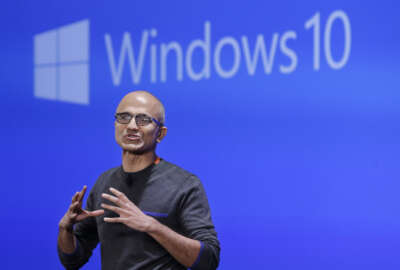DoD seizes ‘Windows’ of opportunity to upgrade desktops
The Defense Department is planning to upgrade all Microsoft information systems to Windows 10 by January 2017.
Big changes are coming to the desktops of Defense Department and military employees.
DoD Chief Information Officer Terry Halvorsen has directed a rapid transition to the Windows 10 operating system starting January 2016, according to a memo he signed last month.
The memo applies to all DoD information systems currently using any Microsoft operating system. The department’s goal is to complete deployment of Windows 10 by January 2017.
“What the Department of Defense is looking to do is improve its security stance and to provide for more consistency throughout the agency,” Nigel Hughes, vice president of sales at SteelCloud told Federal News Radio. “This is a major undertaking. There are obviously millions of desktops throughout the Department of Defense. To move everyone to a Windows 10 platform is a significant undertaking, but it brings tremendous benefit to the department.”
Defense Secretary Ash Carter is expected to publish an execution order with details on the release of the Windows 10 secure host baseline, the memo states.
A secure host baseline is a preconfigured and security hardened machine-ready image that contains an organization’s common operating systems and application software, states a factsheet by the National Security Agency.
“This provides administrators with a common core operating picture that makes it easier to identify and isolate anomalies … In addition to reducing security risks, building [a secure host baseline] image lowers the overall cost of managing a network,” the factsheet states.
The Defense Information Systems Agency and the NSA are co-leading a joint secure host baseline working group to prepare a Windows 10 standard desktop framework, the memo states.
The secure host baseline goes beyond the Security Technical Implementation Guides (STIGs), which are configuration standards for DoD systems.
Each DoD desktop must be in compliance, which would require participation from the military branches, Defense agencies and the systems integrators, Hughes said.
Hughes said there is opportunity for companies to provide assistance to the department in the transition to the new operating system.
“Of course it’s not just Windows, it’s the various applications that each of those desktops support and they too have to be locked down in compliance with the STIG and sometimes there is a disconnect; the app conflicts with the STIG standard or the STIG standard conflicts with the app,” Hughes said.
That is where DoD will need the advice of software vendors.
DoD is currently working with a jumble of different operating systems from Windows 7 and 8 all the way down to Windows XP, which was first released in 2001.
“There’s a lot of aging desktops in and around the department that will all benefit from being able to move to the state-of-the-art [operating system],” Hughes said. “That will provide for much more communications consistency, reliability and security. If everybody has the same security platform I think it’s going to make tremendous benefit to the department.”
A Microsoft spokesperson said the company would have more details soon, but did not provide any further information except to confirm that the memo was released.
Copyright © 2025 Federal News Network. All rights reserved. This website is not intended for users located within the European Economic Area.
Scott Maucione is a defense reporter for Federal News Network and reports on human capital, workforce and the Defense Department at-large.
Follow @smaucioneWFED




